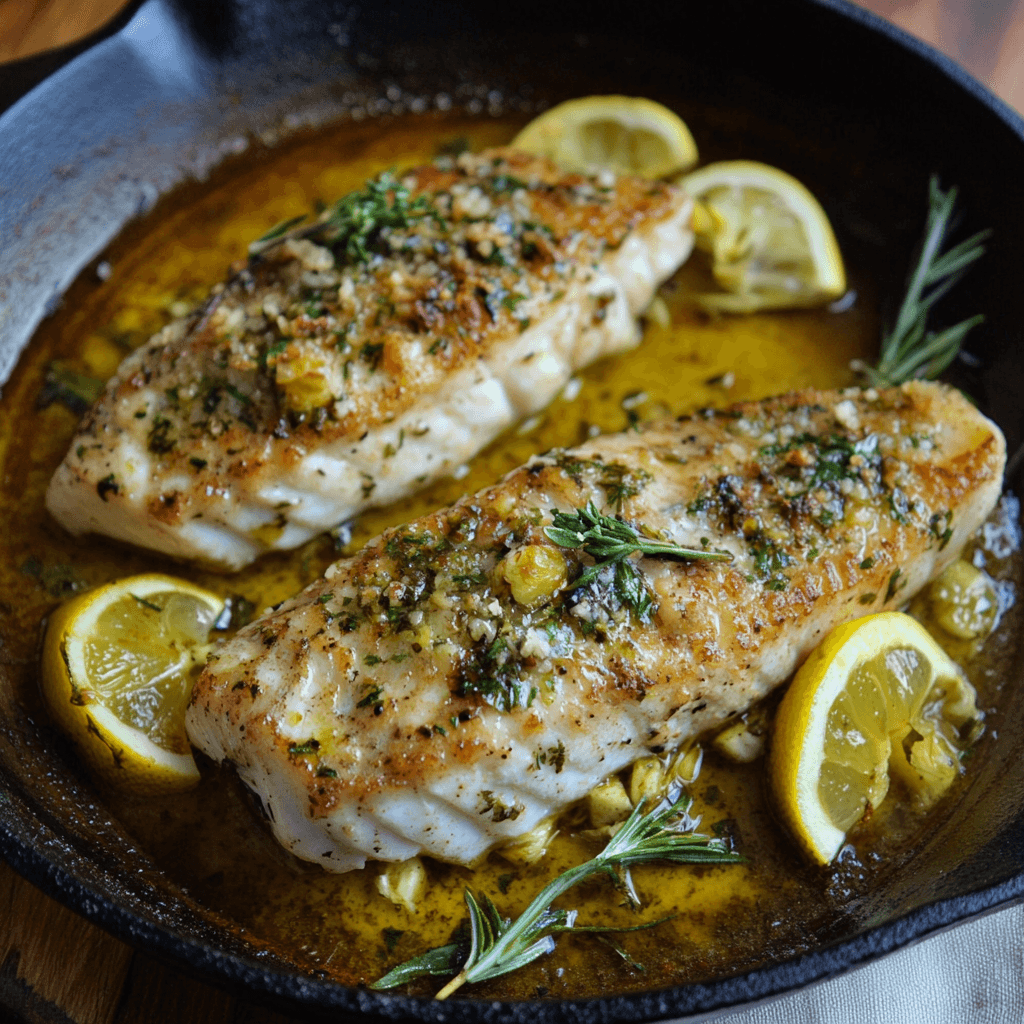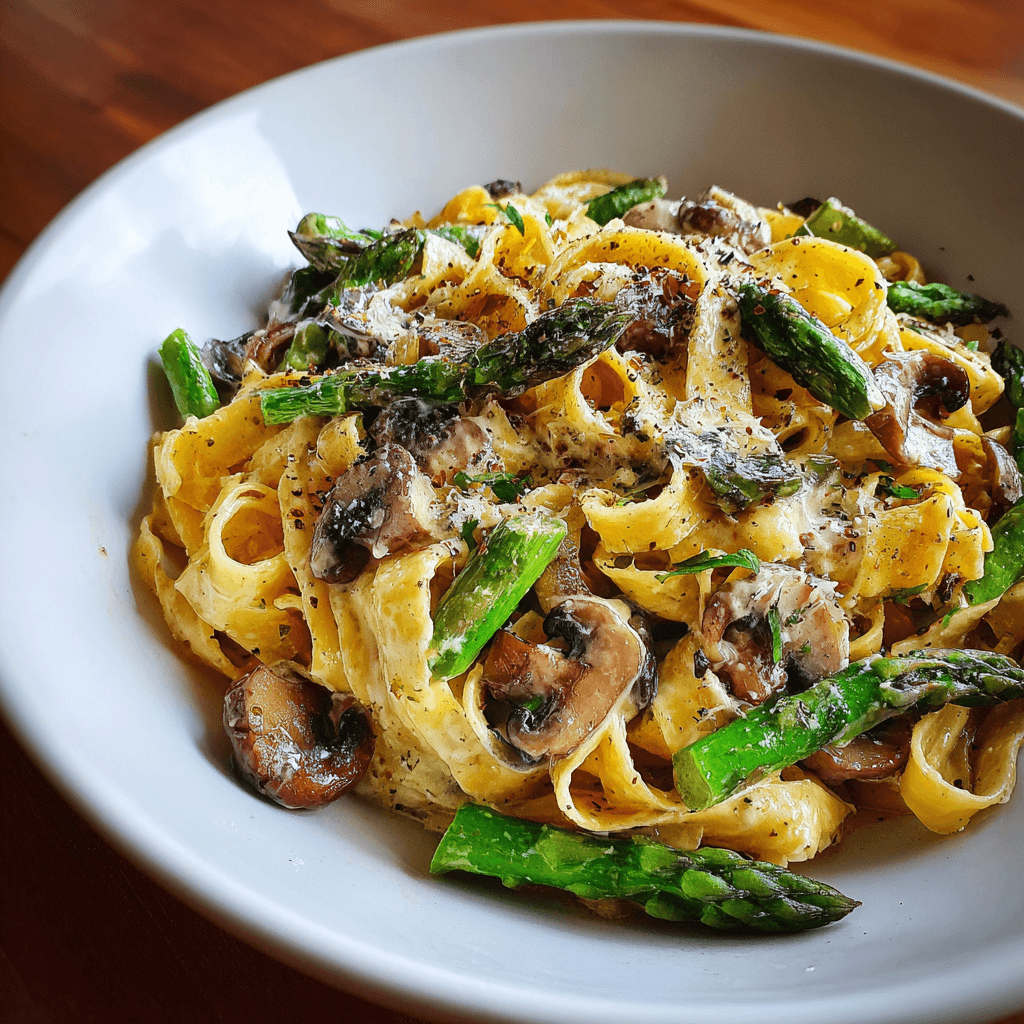Table of Contents
Introduction to Rockfish Recipe
What is Rockfish?
Rockfish refers to a group of Sebastes genus fish found in the Pacific Ocean, known for their firm texture, mild flavor, and adaptability in cooking. With over 100 species, they are distinguished by spiny fins and vibrant colors, from reds and oranges to browns and greys.
Their mild, slightly sweet flavor makes them ideal for grilling, baking, frying, or steaming, complementing various seasonings and sauces. Rich in protein, omega-3s, and essential nutrients, rockfish is both delicious and nutritious, appealing to health-conscious diners.
Characteristics of Rockfish
- Texture: Firm and flaky, perfect for grilling or baking.
- Taste: Mild with a hint of sweetness, adaptable to many seasoning profiles.
- Varieties: Includes species like black rockfish, red snapper, and more.
Nutritional Value of Rockfish
Rockfish is a nutrient-dense seafood that provides a variety of essential vitamins, minerals, and macronutrients to support overall health. Therefore, here’s a breakdown of its nutritional value:
Protein-Rich
Rockfish is an excellent source of lean protein, offering around 20-25 grams of protein per 100 grams. As a result, it is ideal for building and maintaining muscle mass while supporting metabolic functions.
Low in Calories and Fat
With only about 90-120 calories per 100 grams, rockfish is a low-calorie option that fits well into weight management diets. Furthermore, it is low in fat, containing approximately 1-2 grams of fat per serving, with minimal saturated fats.
High in Omega-3 Fatty Acids
It contains beneficial omega-3 fatty acids, which are crucial for heart and brain health. Moreover, these healthy fats help reduce inflammation, improve cholesterol levels, and support cognitive function.
Packed with Essential Vitamins
- Vitamin B12: Promotes red blood cell formation, DNA synthesis, and neurological health.
- Vitamin D: Supports bone health, immune function, and calcium absorption.
In addition, these vitamins contribute to various essential bodily functions.
Mineral-Rich
- Selenium: An antioxidant that helps protect cells from damage and supports thyroid health.
- Phosphorus: Contributes to strong bones and teeth, as well as energy production.
- Potassium: Aids in maintaining healthy blood pressure and muscle function.
- Magnesium: Supports nerve and muscle function and promotes a healthy heart.
Consequently, these minerals make rockfish an excellent choice for balanced nutrition.
Low in Carbohydrates
This fish contains virtually no carbohydrates. Therefore, it is suitable for low-carb and keto-friendly diets.
Cholesterol Levels
Rockfish contains moderate cholesterol levels (about 50-60 mg per 100 grams). However, this is manageable within a balanced diet for most individuals.
By incorporating rockfish into your meals, you can enjoy its rich nutritional benefits while supporting a healthy and balanced lifestyle.
Nutritional Snapshot (Per 100 Grams)
- Calories: 90-120 kcal
- Protein: 20-25 grams
- Fat: 1-2 grams
- Saturated Fat: <1 gram
- Omega-3 Fatty Acids: 0.3-0.6 grams
- Cholesterol: 50-60 mg
- Carbohydrates: 0 grams

Why Choose Rockfish for Your Recipes?
Health Benefits of Eating Rockfish
Rockfish provides essential nutrients that support heart health, brain function, and overall wellness. It’s a low-fat, high-protein option for balanced meals.
Flavor Profile and Versatility
Rockfish’s neutral flavor complements a variety of seasonings, marinades, and cooking techniques, making it ideal for diverse cuisines.
How to Select the Best Rockfish
Tips for Buying Fresh Rockfish
- Look for clear, shiny eyes and firm, translucent flesh.
- Fresh rockfish should have a mild ocean scent, not a fishy odor.
Identifying High-Quality Frozen Rockfish
- Check for vacuum-sealed packaging to prevent freezer burn.
- Avoid packages with ice crystals or discoloration, which indicate poor storage.
Seasonal Availability of Rockfish
Rockfish is generally available year-round but is most abundant during specific fishing seasons, depending on the region.
Proper preparation is essential to make the most of rockfish’s flavor and texture. Here’s a simple guide to cleaning and filleting rockfish, along with recommended kitchen tools to ensure the process is smooth and efficient.
Preparing Rockfish for Cooking
Cleaning and Filleting Rockfish
Rinse the Fish
- Hold the fish under cold running water to remove any surface dirt, scales, or debris.
- Pat the fish dry with a clean paper towel to prepare it for scaling.
Remove Scales
- Use a fish scaler or the back of a knife to scrape the scales away from tail to head.
- Work carefully to ensure you remove all scales, including those near the fins.
Fillet the Fish
- Place the fish on a sturdy cutting board.
- Use a sharp fillet knife to make a clean incision behind the gills and along the spine.
- Carefully separate the fillet from the bones, working your knife gently to avoid tearing the flesh.
Recommended Kitchen Tools for Rockfish Preparation
1. Sharp Fillet Knife
- A high-quality fillet knife is essential for making precise cuts and separating the fish meat cleanly from the bones.
2. Fish Scaler or Knife
- A dedicated fish scaler simplifies the process of removing scales. Alternatively, use the back of a standard kitchen knife.
3. Cutting Board
- Choose a cutting board specifically designed for seafood preparation to maintain cleanliness and avoid cross-contamination.
By following these steps and using the right tools, you’ll have perfectly cleaned and filleted rockfish, ready to cook in your favorite recipe.
Rockfish Recipe
Ingredients List
- 1 whole English rockfish (about 1.5 lbs), cleaned and scaled
- 2 tablespoons olive oil
- 2 tablespoons unsalted butter
- 2 cloves garlic, minced
- 1 lemon, thinly sliced
- Salt, to taste
- Freshly ground black pepper, to taste
- 2 sprigs fresh thyme
- 2 sprigs fresh parsley
- 1/4 cup dry white wine (optional)
Directions
- Preheat your oven to 400°F (200°C).
- Rinse the rockfish under cold water and pat dry with paper towels.
- Rub olive oil all over the fish.
- Season the fish with salt and pepper.
- Stuff the cavity with lemon slices, garlic, thyme, and parsley.
- Drizzle melted butter evenly over the fish.
- Pour white wine around the fish in the baking dish.
- Place the fish in the oven and bake for 20-25 minutes.
- Check that the flesh is opaque and flakes easily.
- Remove from the oven and let it rest briefly before serving.
How to Prepare
First, rinse the English rockfish thoroughly. Pat it dry using paper towels. Next, use a sharp knife to score the skin lightly on both sides. This helps the seasonings penetrate the flesh. Then, rub olive oil all over the fish to keep it moist during cooking. Season generously with salt and freshly ground black pepper. Open the cavity and insert thin lemon slices, minced garlic, fresh thyme, and parsley. For an extra burst of flavor, drizzle melted butter over the top. Optionally, pour a splash of dry white wine around the fish in your oven-proof dish. Allow the fish to sit for 10 minutes to absorb the herbs and spices. This step is vital. It ensures that every bite is infused with a rich, aromatic flavor. Finally, transfer the dish into your preheated oven and follow the baking instructions. The result is a beautifully cooked, tender fish that is full of fresh, vibrant flavors.
Preparation Time
Preparation for this recipe is quick and efficient. Begin by cleaning and prepping the fish in about 15 minutes. Allow an extra 10 minutes for marinating the ingredients inside the cavity. Preheat your oven simultaneously. The baking process takes around 20-25 minutes. In total, you can expect the entire process—from cleaning and seasoning to baking and resting—to take approximately 50 minutes to 1 hour. These steps ensure that the fish is well-prepared and full of flavor. Enjoy the relaxed pace of this method and the rewarding outcome at the end.
Common Mistakes to Avoid When Preparing Rockfish
Preparing rockfish can be simple and rewarding; however, there are some common mistakes that can affect the flavor, texture, and overall success of your dish. Therefore, here’s a guide to what you should avoid:
Overcooking the Fish
Rockfish is naturally lean, and overcooking can make it dry and tough. Consequently, this mistake can ruin the delicate texture.
Tip: Cook just until the flesh is opaque and flakes easily with a fork. Moreover, use a thermometer to check for an internal temperature of 145°F (63°C).
Using Excessive or Strong Marinades
Rockfish has a delicate, mild flavor that can be overwhelmed by heavy marinades or overly salty sauces. As a result, the natural taste of the fish might be lost.
Tip: Instead, opt for light marinades with citrus, herbs, or mild spices to enhance, not mask, the natural flavor.
Not Removing the Scales Properly
Failing to remove scales can result in a gritty texture. Furthermore, this oversight can make the dish less enjoyable to eat.
Tip: Use a fish scaler or the back of a knife to remove all scales before cooking, especially if you’re cooking with the skin on.
Skipping Proper Thawing Techniques
Cooking rockfish straight from frozen or thawing it improperly can lead to uneven cooking and loss of texture. Therefore, it’s essential to thaw the fish correctly.
Tip: Thaw frozen rockfish in the refrigerator overnight or use cold water to thaw it gently and evenly.
Neglecting to Pat the Fish Dry
Leaving the surface of the fish wet can prevent a nice sear or crispy skin. Consequently, the dish may lack the desired texture.
Tip: Before seasoning and cooking, pat the fillets dry with a paper towel to achieve a better texture.
Overcrowding the Pan
When pan-searing or frying, overcrowding the pan reduces heat, resulting in uneven cooking and soggy textures. Additionally, it makes browning the fish difficult.
Tip: Cook in batches if necessary, ensuring enough space between fillets for proper browning.
Using the Wrong Cooking Method
Rockfish is versatile, but certain methods may not bring out its best qualities. For instance, boiling or oversteaming can lead to bland results.
Tip: Stick to grilling, baking, pan-searing, or frying for optimal results. However, avoid boiling or oversteaming unless for a specific recipe.
Skimping on Seasoning
Under-seasoning can make the dish bland. Consequently, the flavor potential of the rockfish may go untapped.
Tip: Season generously with salt and pepper before cooking and consider finishing with a drizzle of lemon juice or herbs for added flavor.
Not Cleaning the Fish Thoroughly
Residual guts or blood can leave an unpleasant taste. Therefore, thorough cleaning is essential to maintain the fish’s quality.
Tip: Clean the fish thoroughly, removing all entrails and rinsing well under cold water.
Discarding the Skin Too Soon
Rockfish skin can add flavor and texture if prepared correctly. Moreover, it can hold the fillet together during cooking.
Tip: Leave the skin on for grilling or pan-searing to help hold the fillet together and add a crispy element when cooked properly.
By keeping these tips in mind, you can avoid these common pitfalls and enjoy perfectly prepared rockfish every time!
Top Cooking Techniques for Rockfish
Rockfish is a versatile fish with a mild, slightly sweet flavor and firm texture, making it perfect for various cooking methods. Here are the top techniques to bring out the best in rockfish:
1. Grilling
Grilling rockfish enhances its natural flavor with a smoky, slightly charred finish.
- Tips:
- Preheat the grill and oil the grates to prevent sticking.
- Marinate the fish with olive oil, garlic, lemon, and herbs before grilling.
- Cook over medium-high heat for 4-5 minutes per side or until the fish flakes easily.
2. Pan-Searing
Pan-searing creates a golden, crispy crust while keeping the fish moist inside.
- Tips:
- Pat the fish dry and season with salt and pepper.
- Heat a skillet with butter or oil over medium-high heat.
- Place the fish skin-side down first (if the skin is on) and cook for 3-4 minutes per side.
- Finish with a drizzle of lemon juice or a herb butter sauce.
3. Baking
Baking rockfish is a healthy, hands-off method that preserves its natural moisture.
- Tips:
- Preheat the oven to 375°F (190°C).
- Place the fish in a baking dish, season with salt, pepper, and herbs, and drizzle with olive oil.
- Add vegetables or a sauce for a one-pan meal.
- Bake for 15-20 minutes or until the fish is opaque and flakes easily.
4. Deep-Frying
Deep-frying creates a crispy, golden exterior, ideal for making fish and chips or fish sandwiches.
- Tips:
- Coat the fish in a seasoned batter or breadcrumbs.
- Heat oil to 350°F (175°C) in a deep fryer or large pot.
- Fry the fish for 3-5 minutes, turning occasionally, until golden brown and cooked through.
- Drain on paper towels and serve with tartar sauce or lemon wedges.
5. Poaching
Poaching is a gentle cooking method that keeps the fish tender and moist.
- Tips:
- Use a flavorful liquid like fish stock, white wine, or a mix of water, lemon, and herbs.
- Simmer the liquid, then add the fish and cook for 8-10 minutes or until flaky.
- Serve with the poaching liquid as a light sauce.
6. Steaming
Steaming is a quick and healthy way to cook rockfish, preserving its natural flavor.
- Tips:
- Season the fish with salt, pepper, and your favorite herbs.
- Use a steamer basket over simmering water.
- Steam the fish for 8-12 minutes, depending on the thickness.
7. Broiling
Broiling is similar to grilling but uses your oven’s high heat to give the fish a charred finish.
- Tips:
- Place the fish on a baking sheet lined with foil.
- Brush with oil and season with spices or a marinade.
- Broil on high for 4-6 minutes, watching closely to avoid overcooking.
8. Stir-Frying
For an Asian-inspired dish, stir-frying rockfish with vegetables and sauces creates a quick, flavorful meal.
- Tips:
- Cut the fish into bite-sized pieces and coat lightly in cornstarch for crispiness.
- Use a hot wok or skillet with oil.
- Stir-fry the fish for 2-3 minutes, then add vegetables and a sauce like soy-ginger or teriyaki.
Popular Rockfish Recipes
Classic Grilled Rockfish with Lemon Butter Sauce
Marinate the fish with olive oil, garlic, and herbs, then grill and serve with a tangy lemon butter sauce.
Pan-Seared Rockfish with Garlic Herb Sauce
Sear the fish to perfection and drizzle with a sauce made from garlic, parsley, and butter.
Rockfish Tacos with Fresh Salsa
Top grilled rockfish with zesty salsa, avocado slices, and a squeeze of lime in a soft tortilla.
Baked Rockfish with Mediterranean Herbs
Layer the fish with oregano, thyme, and olive oil before baking with cherry tomatoes and olives.
Asian-Style Rockfish Stir-Fry
Combine bite-sized rockfish pieces with soy sauce, ginger, and vegetables for a quick and flavorful dish.
Pairing Rockfish with Side Dishes and Beverages
Best Side Dishes for Rockfish
- Garlic mashed potatoes
- Steamed asparagus or green beans
- Rice pilaf or quinoa
Pair this pot pie with the Ultimate Baked Beans Recipe for a well-rounded meal.
Storage and Reheating Tips
How to Properly Store Cooked Rockfish
- Refrigerate in an airtight container for up to 3 days.
- Freeze for longer storage, ensuring it’s well-wrapped to prevent freezer burn.
Reheating Without Losing Flavor
- Use a low-temperature oven (275°F) or a skillet to gently warm the fish.
- Avoid microwaving, which can dry out the texture.
Frequently Asked Questions About Rockfish Recipes
What is the Best Way to Use Rockfish?
Rockfish is incredibly versatile and can be used in various cooking methods, depending on your preferences and recipe. The best ways to use rockfish include:
- Grilling: Adds a smoky flavor and a slightly crispy texture. Marinate with olive oil, garlic, and lemon juice before grilling.
- Pan-Searing: Quick and easy, this method gives the fish a golden crust while keeping it moist inside. Pair it with a buttery herb sauce.
- Baking: Ideal for healthy cooking, baking rockfish with vegetables and herbs is a simple, flavorful option.
- Tacos: Shred cooked rockfish and use it as a filling for fish tacos, topped with salsa and lime.
- Stir-Frying: For an Asian-inspired dish, toss bite-sized pieces of rockfish with vegetables and soy-based sauces.
Is Rockfish a Good Eating Fish?
Yes, rockfish is an excellent eating fish. It’s prized for its:
- Mild Flavor: Slightly sweet and not overly “fishy,” making it appealing to a wide range of palates.
- Firm Texture: Its flaky yet firm texture makes it versatile and suitable for grilling, frying, baking, or steaming.
- Nutritional Benefits: Rich in protein, omega-3 fatty acids, vitamins (B12, D), and minerals like selenium and phosphorus, rockfish is a healthy choice.
Overall, rockfish is a great option for anyone looking for a delicious, nutritious, and easy-to-prepare fish.
Enjoy another comforting classic with the Old Fashioned Vegetable Beef Soup Recipe, perfect for soup lovers.
Should I Soak Rockfish Before Cooking?
Soaking rockfish is not necessary in most cases, but it can be helpful in specific situations:
- To Remove Strong Odors: If the fish has a strong smell, soaking it in milk or a mixture of water and lemon juice for 20-30 minutes can neutralize odors and enhance the flavor.
- To Tenderize: Some recipes recommend soaking in buttermilk or a light brine to improve texture and add subtle flavor.
- When Not to Soak: Avoid soaking if the fish is already fresh and mild in aroma, as this can dilute its natural flavor.
Does Rockfish Taste Like Lobster?
While rockfish doesn’t taste exactly like lobster, it does share some similarities in texture and sweetness.
- Texture: Rockfish has a firm, flaky texture, which can feel slightly similar to lobster meat, especially when grilled or baked.
- Flavor: It has a mild and slightly sweet flavor, but it is not as rich or buttery as lobster.
- Best Use: Rockfish can be used as a substitute in dishes where lobster isn’t the main focus, such as in seafood stews or casseroles. However, it won’t replicate lobster’s unique taste and richness.
Conclusion: Embracing the Art of Cooking Rockfish
Rockfish offers endless culinary possibilities with its delicate flavor and robust texture. Whether you’re grilling, baking, or frying, this versatile fish is sure to delight your palate. Dive into these recipes and make rockfish a staple in your kitchen!
For a sweet ending, indulge in the Churro Cheesecake Recipe, a dessert that balances the richness of the pot pie.
Enjoy the warmth and satisfaction that comes with every bite of this timeless classic, and don’t forget to pair it with complementary sides and beverages for a complete, memorable meal. Happy cooking!





